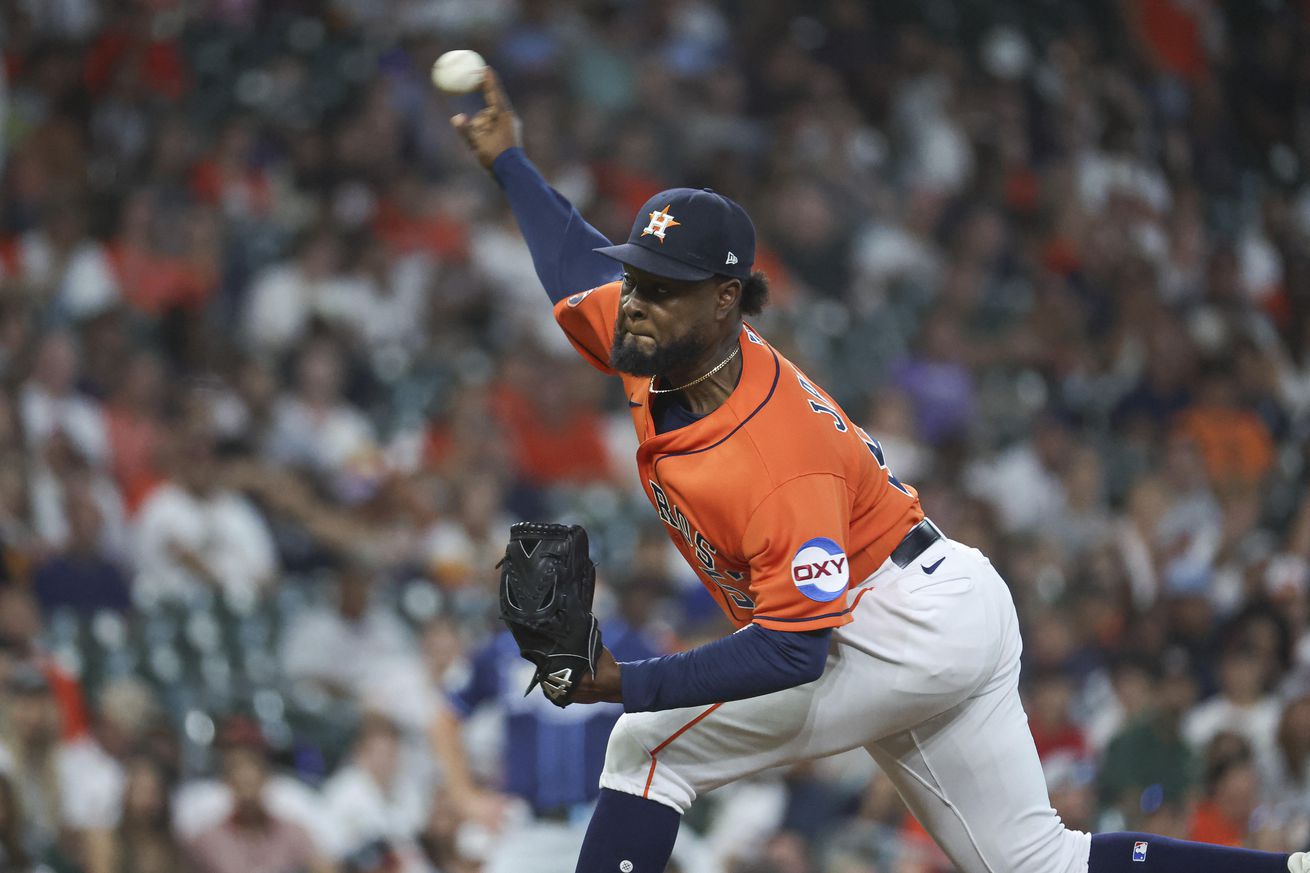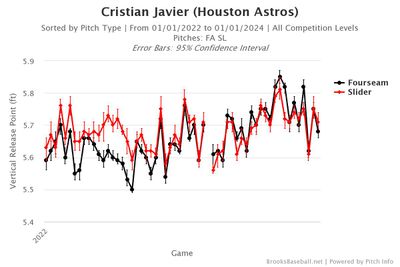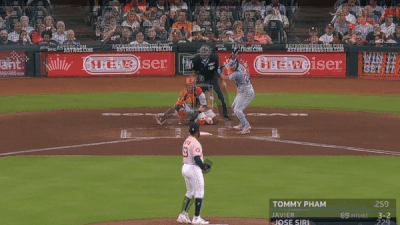
Baseball is a game dictated by adjustments. Some are continuous, others are occasional. Adjustments can range from minor to complete overhaul. The complete overhaul tends to garner the most attention, but even the minor ones could vastly impact a player’s performance, for good or ill. Or not, as not all adjustments translate to a noticeable change in results.
Cristian Javier is in the middle of an adjustment himself. If you’re not already familiar, the right-hander has had his fair share of issues this summer, with a 7.04 ERA and 5.57 FIP since June 9. For context, he had a 2.84 ERA and 3.62 FIP from March 31 through June 3. As I wrote in June, it has become clear that Javier’s release point was playing a role in his mid-season decline in addition to a slight velocity decline. As already discussed ad nauseam, Javier is at his best when his four-seam fastball has the illusion of rising as it approaches the plate. In reality, his fastball experiences less drop on its way to the plate. As his vertical release point inched higher as the season progressed, it led to his four-seam having a bit more drop to it. For Javier, that wasn’t an optimal trend to continue.
Following a rather horrible start against the Rangers on July 3, the Astros decided to skip Javier’s next start and give him some extra rest leading into the All-Star break. The club was steadfast that it wasn’t an injury affecting the right-hander, but more likely a bout of arm fatigue. In his three subsequent starts, Javier’s results have improved to some degree, with a 4.32 ERA in his last 16 2⁄3 innings. Not great, yet certainly not terrible. Progress, at least.
Upon closer examination, I do like what I am seeing from Javier under the hood. For one, his velocity has seen an gradual uptick in July, even if the average remains around 93 MPH. Arguably more critical, however, is his vertical release point, which has generally adjusted in the right direction in recent starts.

We can also see that same trend by Vertical Approach Angle Above Average (VAA AA), along with video evidence.
3/31-6/3/23
+0.25 degrees VAA AA
7/16-7/28/23
+0.33 degrees VAA AA

However, Javier’s release point remains higher than it did during his breakout 2022 season (+0.53 degrees VAA AA). His arm likely remains fatigued by some degree, although hopefully to a lesser extent than it was earlier in July. The recent results tend to point that way. To be clear, Javier’s velocity isn’t non-factor in this discussion, but a large workload in recent years has likely caught up to him a bit this season. Without further rest, I doubt we will see it bounce back this year to his near 94 MPH average in 2022. If I were to guess, I think he and the Astros would be wise to concentrate more on release point consistency than pushing the velocity envelope too hard at this moment.
Historically, I tend to overrate adjustments, realized or potential. For example, I was way too quick to loosely compare Joe Biagini to another Ryan Pressly-type return when the Astros acquired the former in 2019. I did the same with Aaron Sanchez. Chris Devenski following his decline was another. Sometimes I became caught up in an adjustment being made for adjustment sake. I like to think that I’ve learned since then, which is why I am far from declaring Javier as fixed or anything of the sort. But I do like the adjustments I’ve seen thus far, because without Javier pitching more efficiently, I think the Astros are left in an increasingly perilous position with the postseason race coming into clearer view.